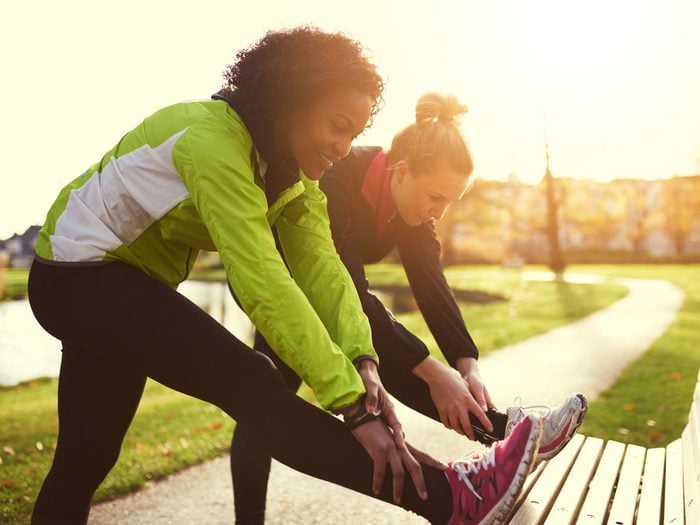
Run this world
Who runs the world? Girls! Today, more women than ever are pinning on race bibs. In most race distances, females outnumber male entrants two to one. In 2017, women made up nearly 60% of the total 18.3 million U.S. race finishers. Women also outnumber men in Canadian races; statistics for 2015 reveal 51.2 percent of road race participants were women.
Ready to lace up? We’ve rounded up the hottest new gear for spring.

No bones about it
Osteoporosis is often considered a “woman’s disease” for being one of the most prevalent diseases among post-menopausal women. And it’s the cause of more fractures in females than males. Running is a great Rx that can help stave off the effects of this disease, strengthening knees and increasing bone mass.
This strengthening workout can help you become a better runner.
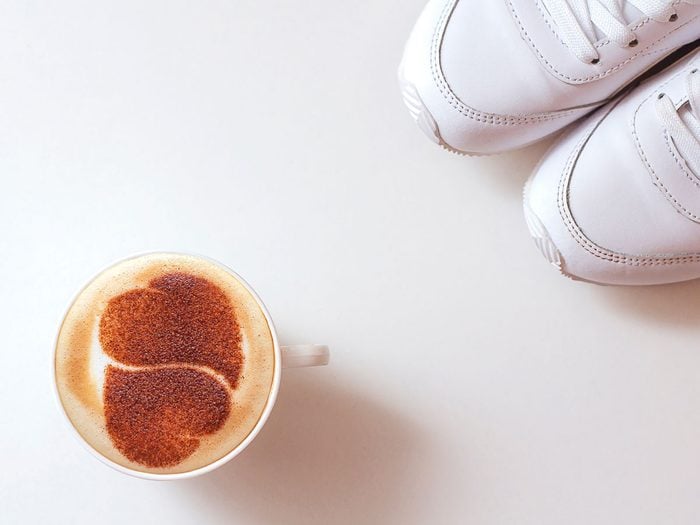
Caffeine kick
Good news, coffee lovers! Multiple studies show that consuming a cup (or two) of coffee before a run or big race will not only help you go faster, but farther. So, have that cup of joe about an hour before you head out on your long run. Just keep these diet tips in mind to avoid a case of runner’s diarrhea.
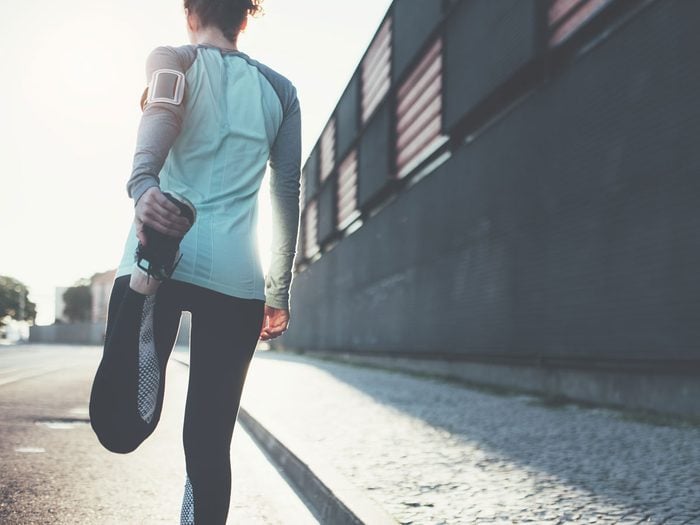
Bee’s knees
One of the most cautionary warnings runners hear is: It will ruin your knees. Actually, the science disagrees. Several long-term studies show that not only is this not the case, but running can help protect joints and reduce inflammation. But if you’ve got pain behind the knee, here’s what it could mean.
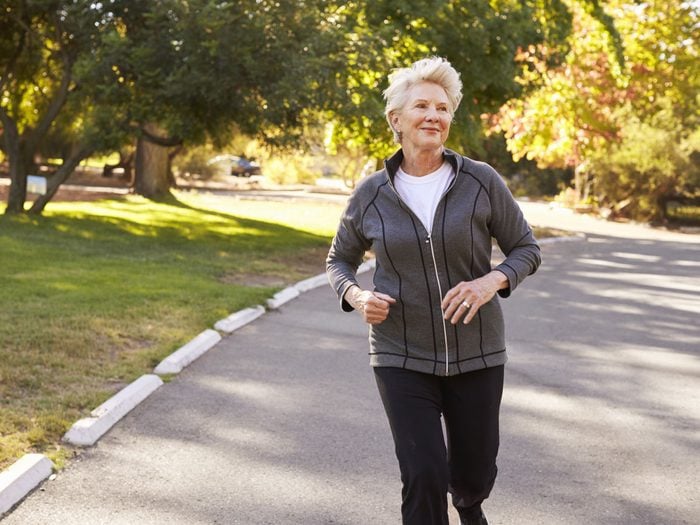
Golden years
Go for gold! Women are breaking records well into their golden years (age 65 to 80+). At 92, Harriette Thompson, became the oldest woman to finish a marathon, and in 2015, at age 70, Gunhild Swanson became the oldest woman to complete a 100-mile endurance run. In her book, Older, Faster, Stronger, Canadian author Margaret Webb, who found herself newly divorced, a smoker and overweight, took up the sport and details how some women find success in the sport later in life – even hitting their prime. Noting that it’s never too late to start and that it can keep women physically fit and mentally astute. According to Jillian Michaels, your age has nothing to do with how fit you are!
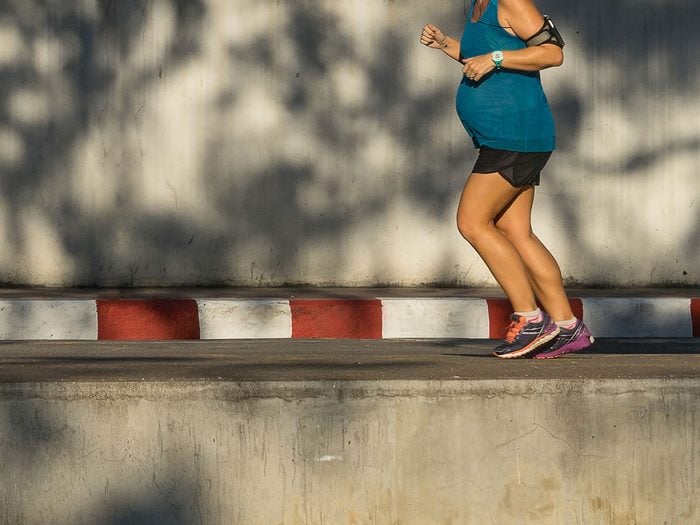
Pregnant pause?
Are you expecting? No need to scrap your running plan. What was once taboo is becoming more acceptable. Like any exercise program, consult your doctor and do take the proper precautions. It’s not advisable to take up running while pregnant if you weren’t running before. You may need to slow down your pace and monitor your body temperature to avoid overheating, which can harm the unborn baby.
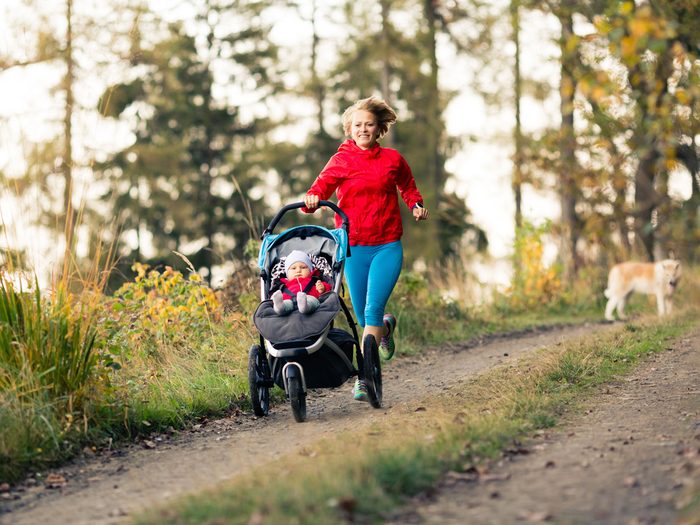
Have baby, will run
Don’t get sidelined once the baby arrives. Once you get the doc’s all clear, you can start running again and bring the baby along (usually around six months) in a jogging stroller. These strollers help keep you active while getting you and baby outside for fresh air and the additional gear means you’ll burn more calories. Need some momspiraton? Last summer, Montana mom Cynthia Arnold not only finished her half with a PB but broke the world record for running the fastest half while pushing her three (three!) kids in a stroller.
Check out these 5 ways acupuncture can improve your fitness.
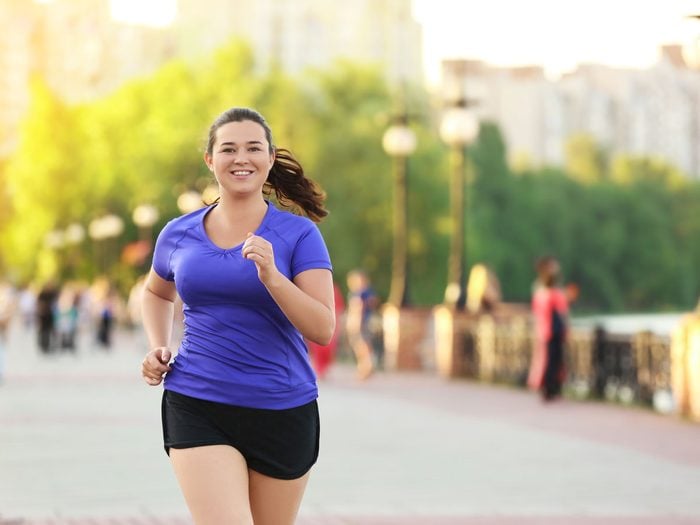
Good vibes only
While some have a love-hate relationship with running, many experience a “runner’s high,” a rush of feel-good chemicals from the endorphins released. And even just 30 minutes of moderate exercise can improve mood, and help with stress and anxiety. Practice mindful running and you’ll reap even more mood-boosting benefits.
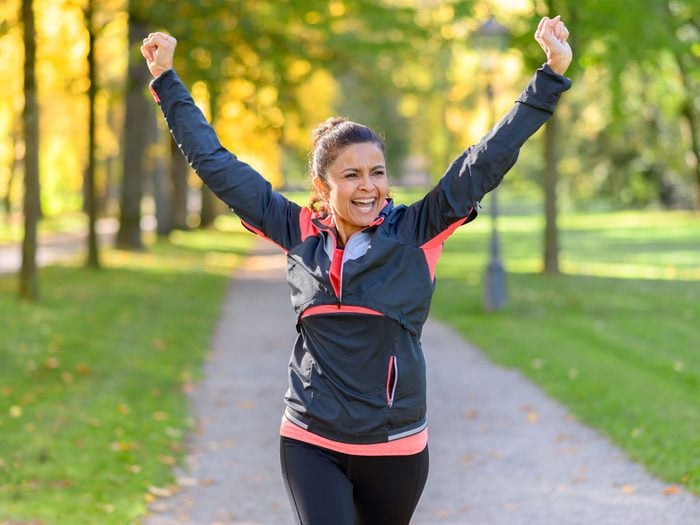
Go the distance
When it comes to running extra kilometers, women have an advantage and some bragging rights. A recent study found that females are considerably less tired by the end. So, although men might be faster, women can go the distance.
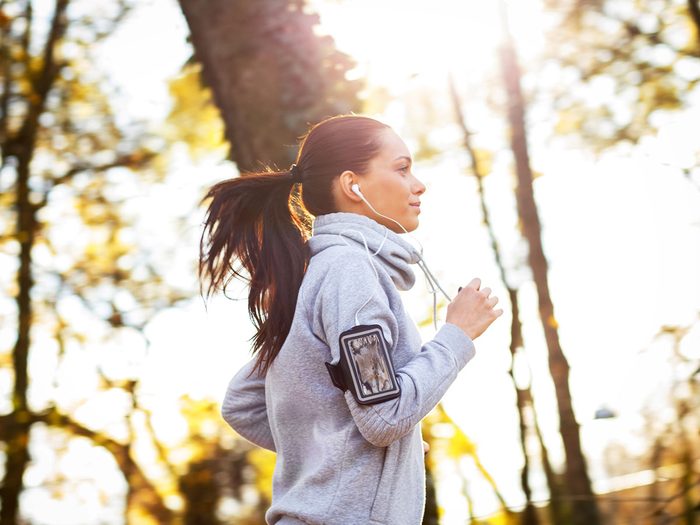
Get going
The Canadian Physical Activity Guidelines recommends woman get 150 minutes of moderate- to vigorous-intensity physical activity per week. Not every run or workout needs to be high-intensity, balance your sessions to include a mix until you reach a minimum of 2 ½ hours per week. (You’d be surprised at what actually counts as cardio.)
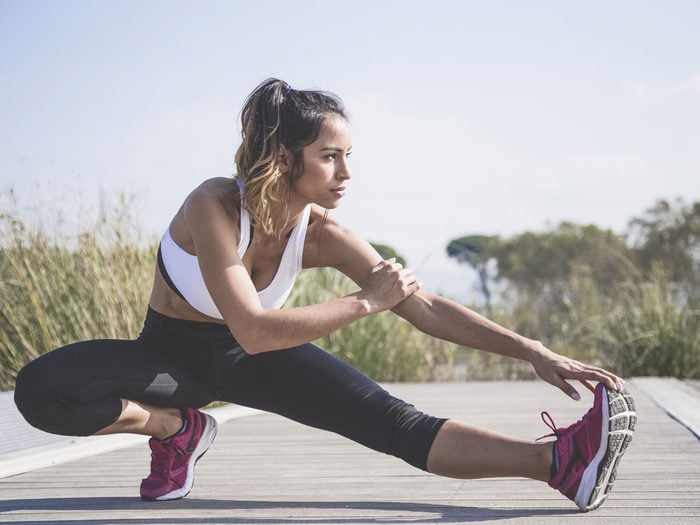
Take heart
Heart disease and stroke is the number one cause of premature death in women. Number one! Running not only gets your heart rate up but can help prevent high blood pressure, reduce the risk of heart disease, stroke, breast and colon cancer, and type 2 diabetes.
Don’t miss this story from our editor about how personal trainer helped her cope with grief.
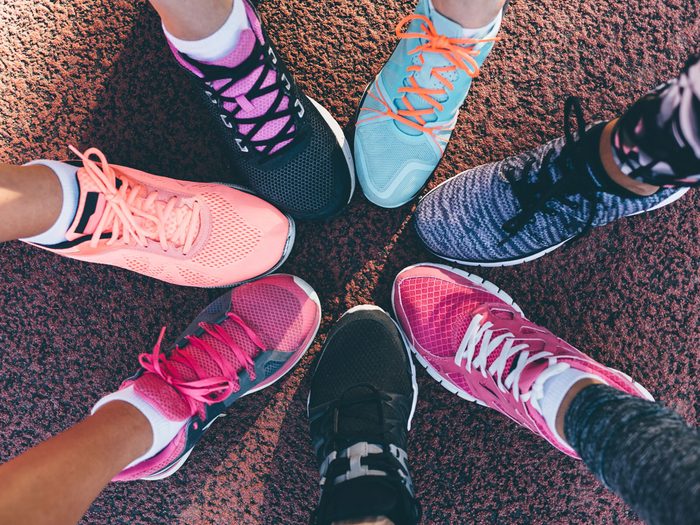
Girl gang
Running is a great solo sport, but you can also make it a group activity. With the steady rise of running clubs and crews across the country, it’s a great way for women to stay connected and accountable, forge a community of like-minded friends in a social setting. Even better, plan a getaway with your friends and run one of these destination races.
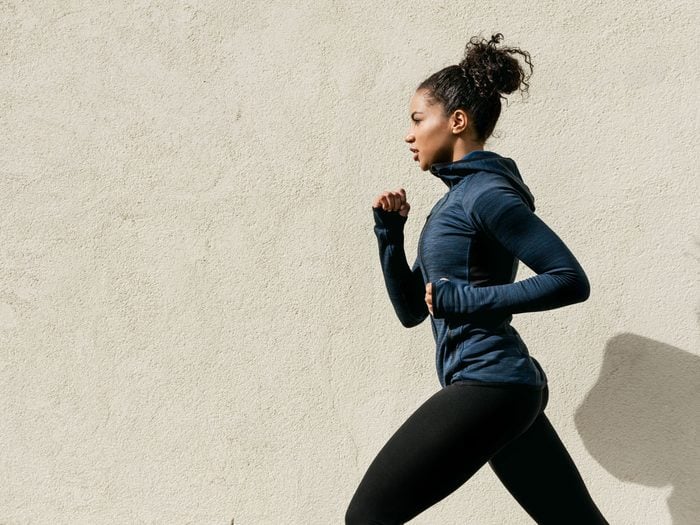
Pace out
Although men continue to outpace women in marathon finishing time, the gap is narrowing. Females are superior at maintaining a consistent pace from start to finish by almost 19%. This encouraging news means you won’t burn out at the tail end of a race when you may need it most. Running tip for both sexes: Starting out slower could improve your results significantly.
Legs getting all the attention lately? Show your upper body some love with our best arm exercises for women.
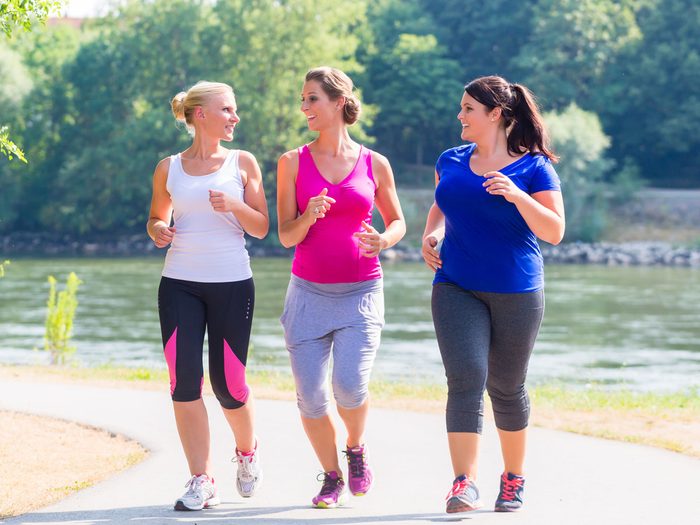
Support system
If you’re a new mom or coping with a weak pelvic floor—the group of muscles that act as a sling holding up organs, including bowels and uterus—you don’t need to suffer through your runs. A new device that might help is the Elvie, a gadget that acts like a personal trainer for your pelvic floor, intended to help you correctly perform Kegel exercises.
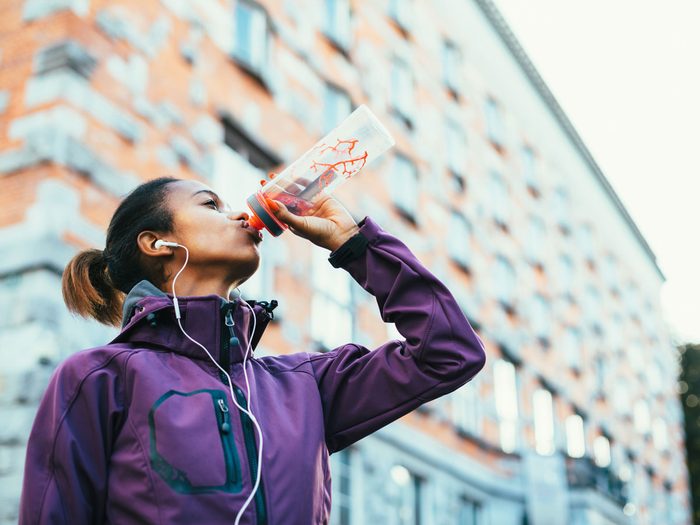
Vitamins
Women generally need more iron than men to make up for the loss during the menstrual period. As well, pregnant women tend to have lower iron levels when they’re expecting and need to up their iron. Consult with your doctor, monitor your iron and consume an iron-rich diet and take a supplement, as needed to balance out the loss.
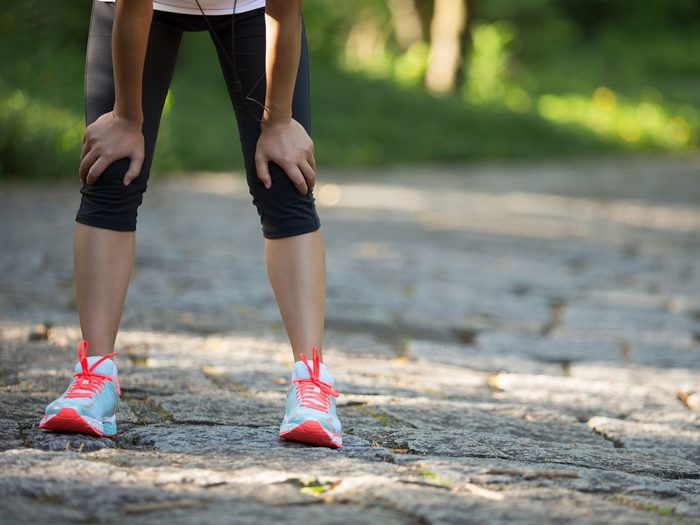
Go with the flow
Every woman’s period is different. For some, cramping and hormonal malaise can curb your running agenda, yet for others, such as free-bleeding runner/drummer/activist Kiran Gandhi, who literally went with the flow during her marathon, menstruation doesn’t seem to slow them down. If you’re up to it, find a comfortable solution that works, such as wearing period-proof underwear, like Knix leakproof. This pair of skivvies has a built-in super-absorbent pad for an extra layer of protection.
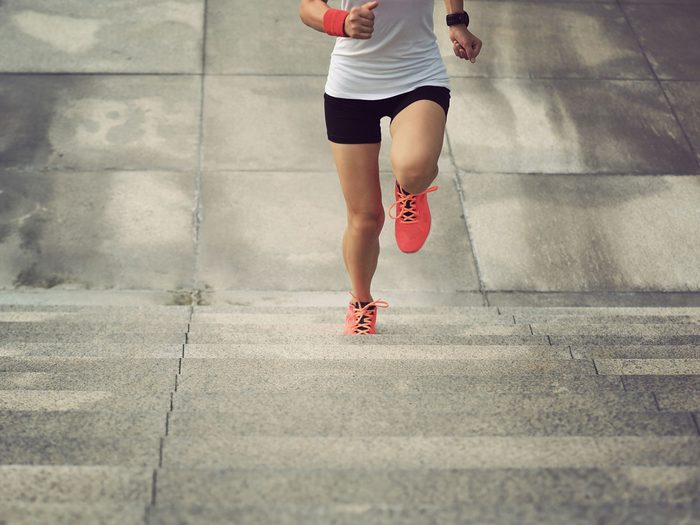
In the long run
A study from the Mayo Clinic, found that running a minimum of six miles (just under 10 km) per week—and not necessarily more—can increase your longevity by three to six years. This breaks down to 2 short runs or 1 long run a week – a very doable long-term goal.
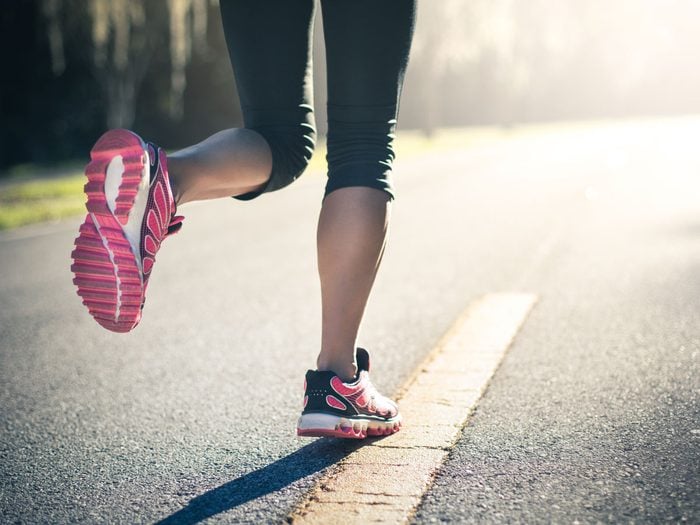
Go the extra mile
Women generally have a higher percentage of fat than men and this biological advantage can come in handy when long-distance running. This additional storage provides more fuel from slow-burning fat.
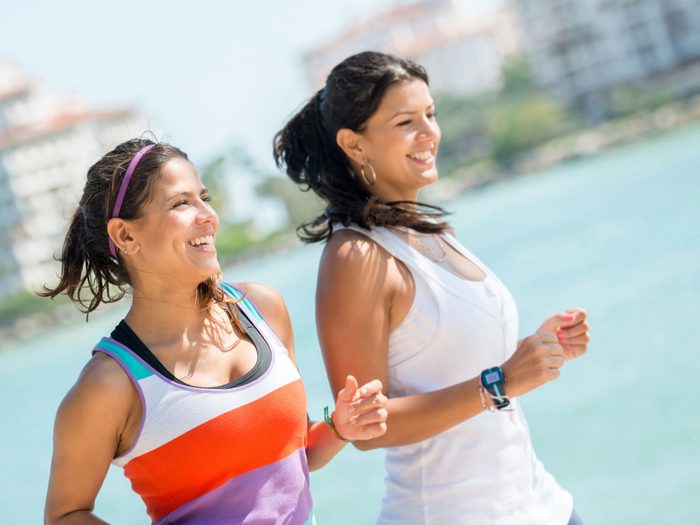
Fast friends
Trade in your cocktail date for a run date. Set up a weekly run date with a friend. This will help keep you accountable and on track – especially on days when you’re lacking motivation. This date fulfills your social obligation while you complete your physical activity.

Play it safe
Considering that the bulk of your runs will be solo, it’s always wise to be aware of your surroundings. Some tips from female runners: Be aware of your surroundings. If running to music only put one earbud in. Enable GPS tracking on your device. (You should also know about this life-saving feature on the iPhone.) Run with reflective gear at night to make you visible. Notify someone before you head out for a run. Switch up your route.
Don’t miss these 13 health myths that turned out to be true.
